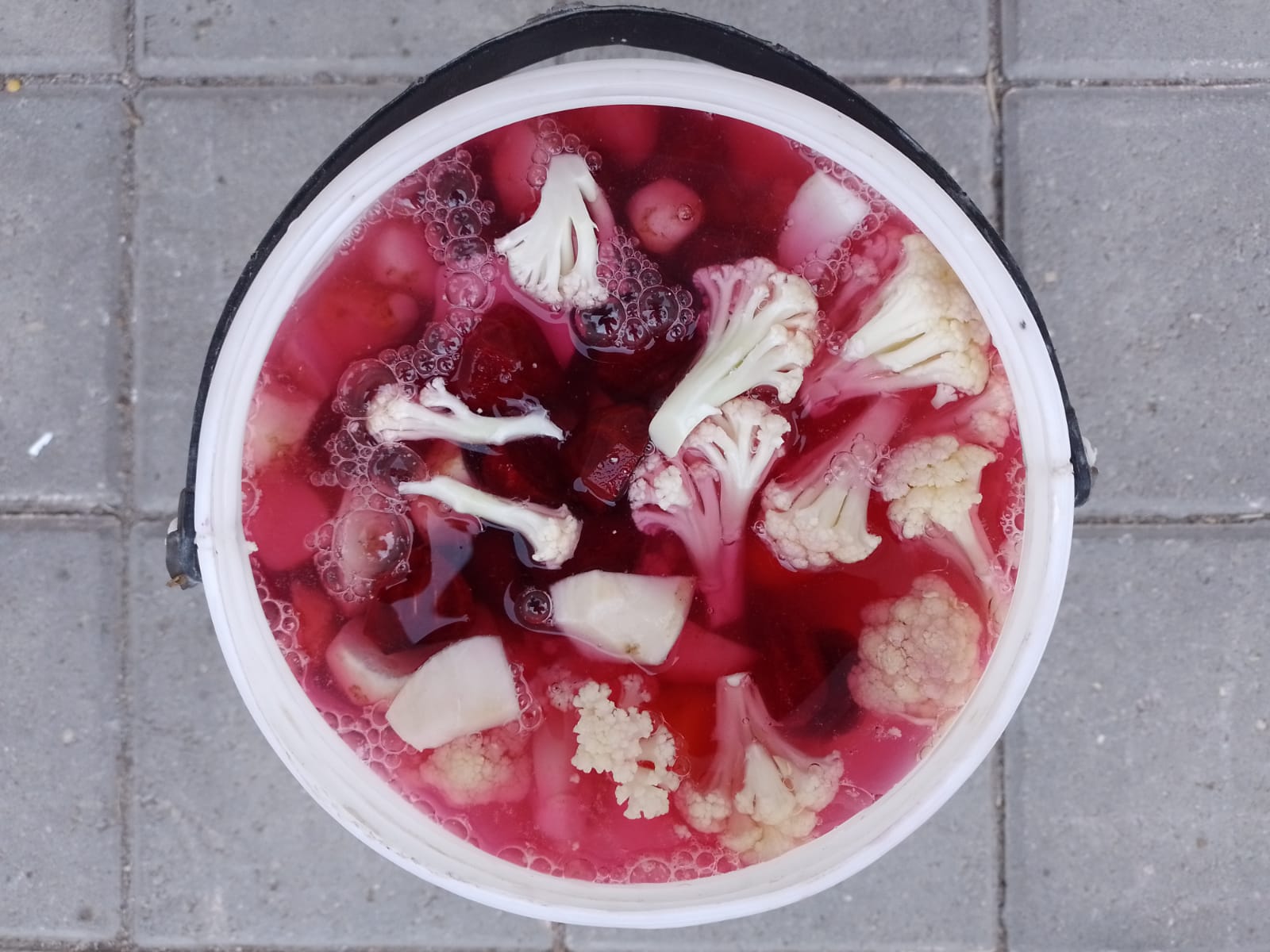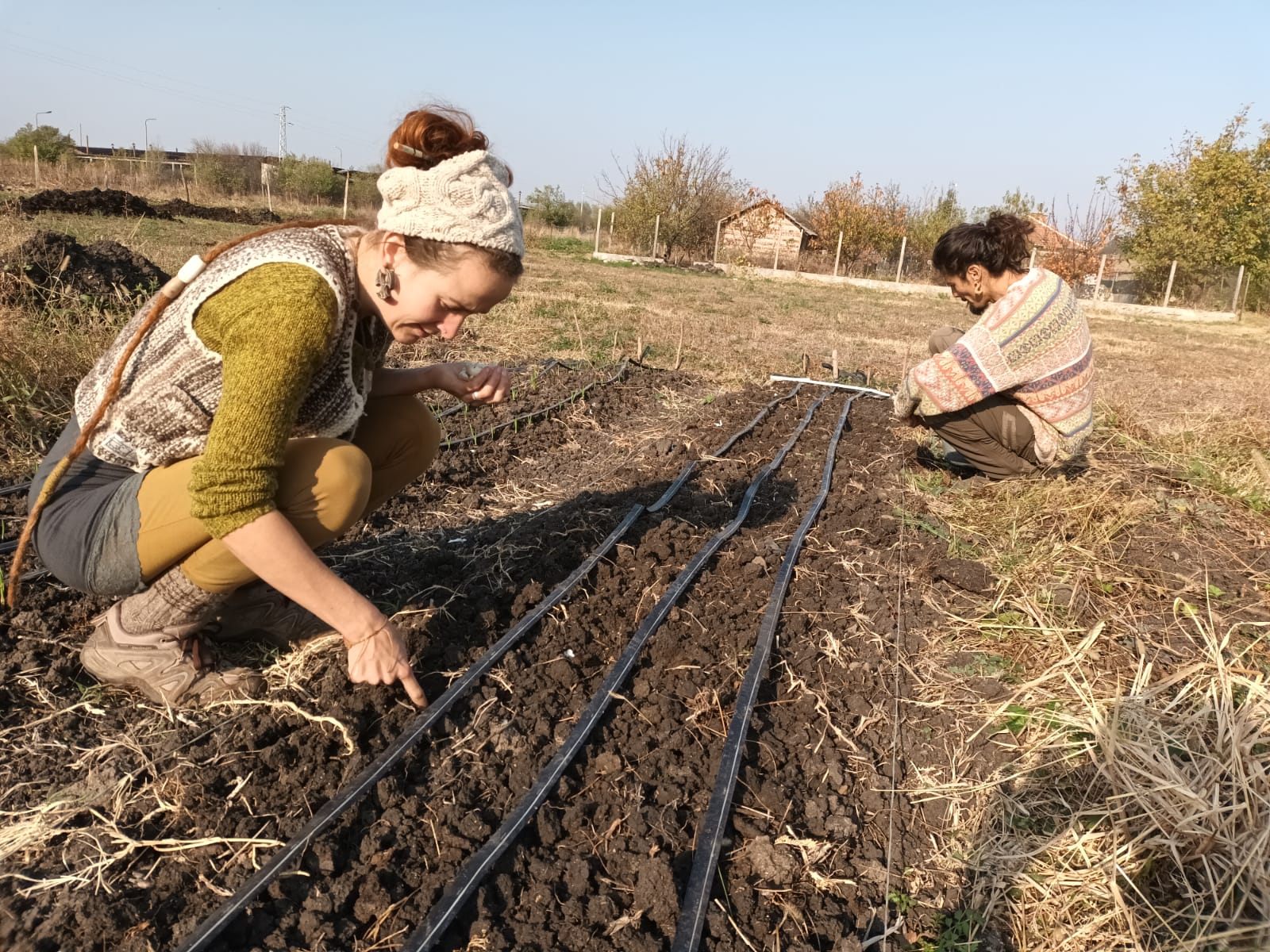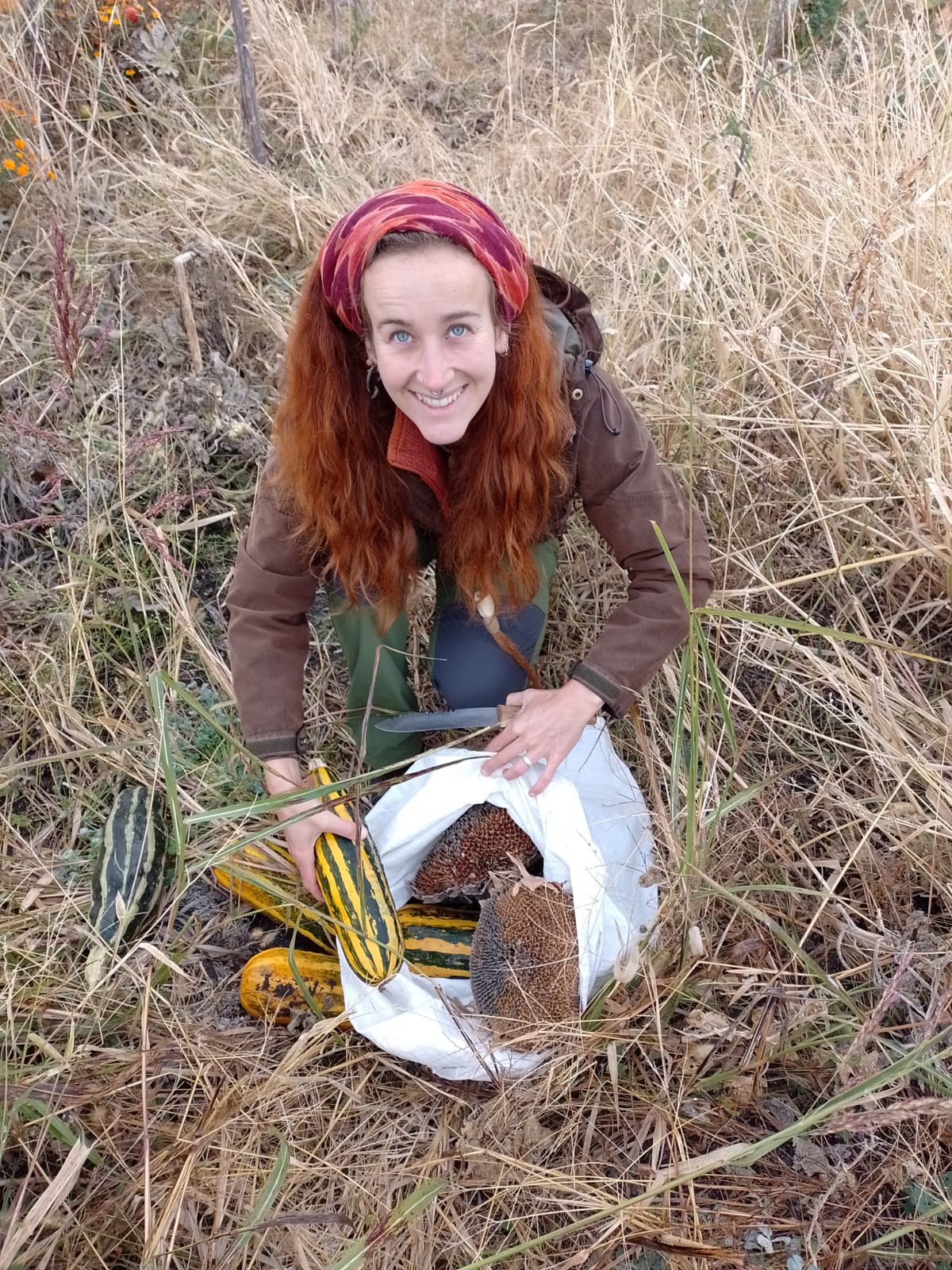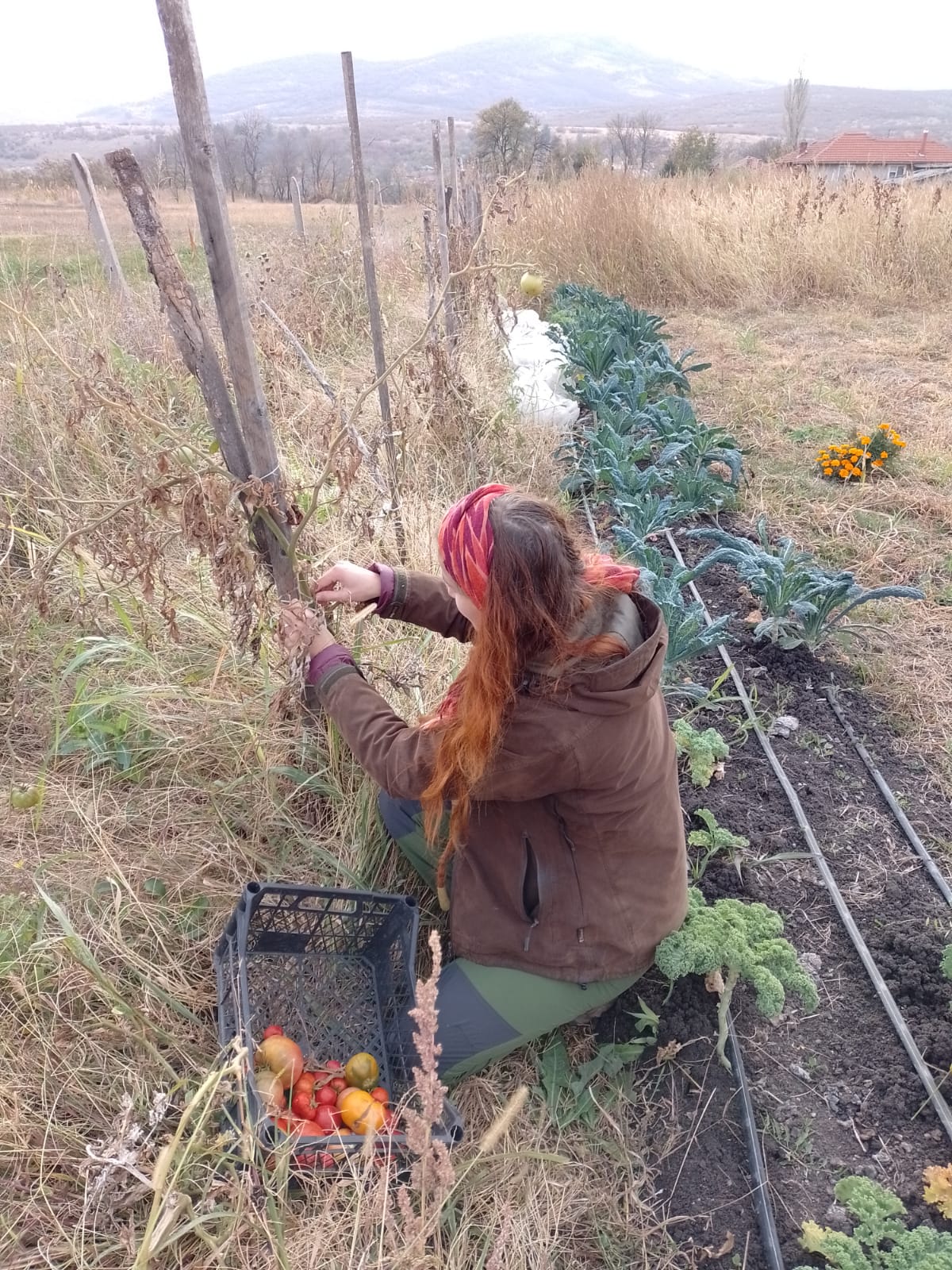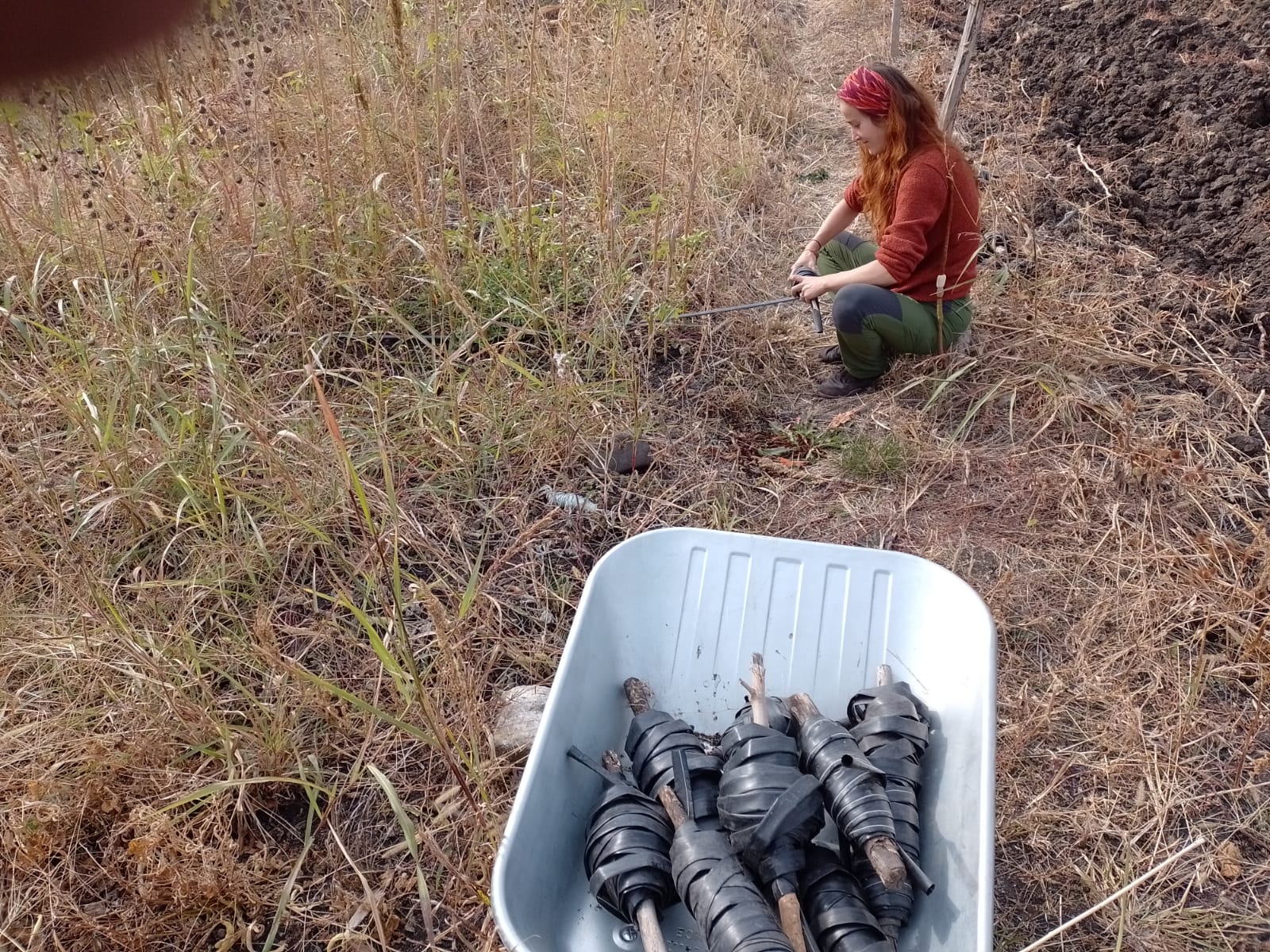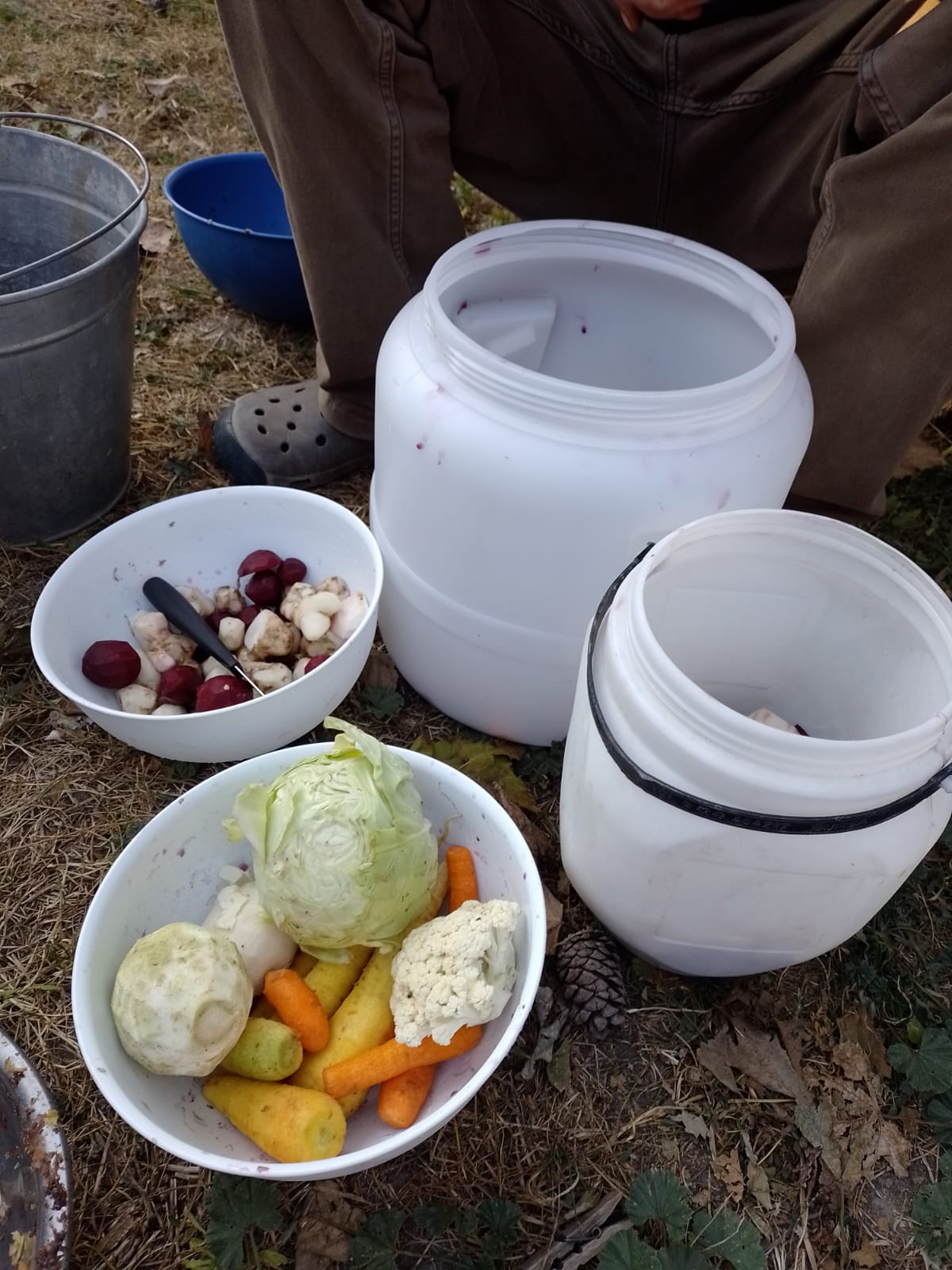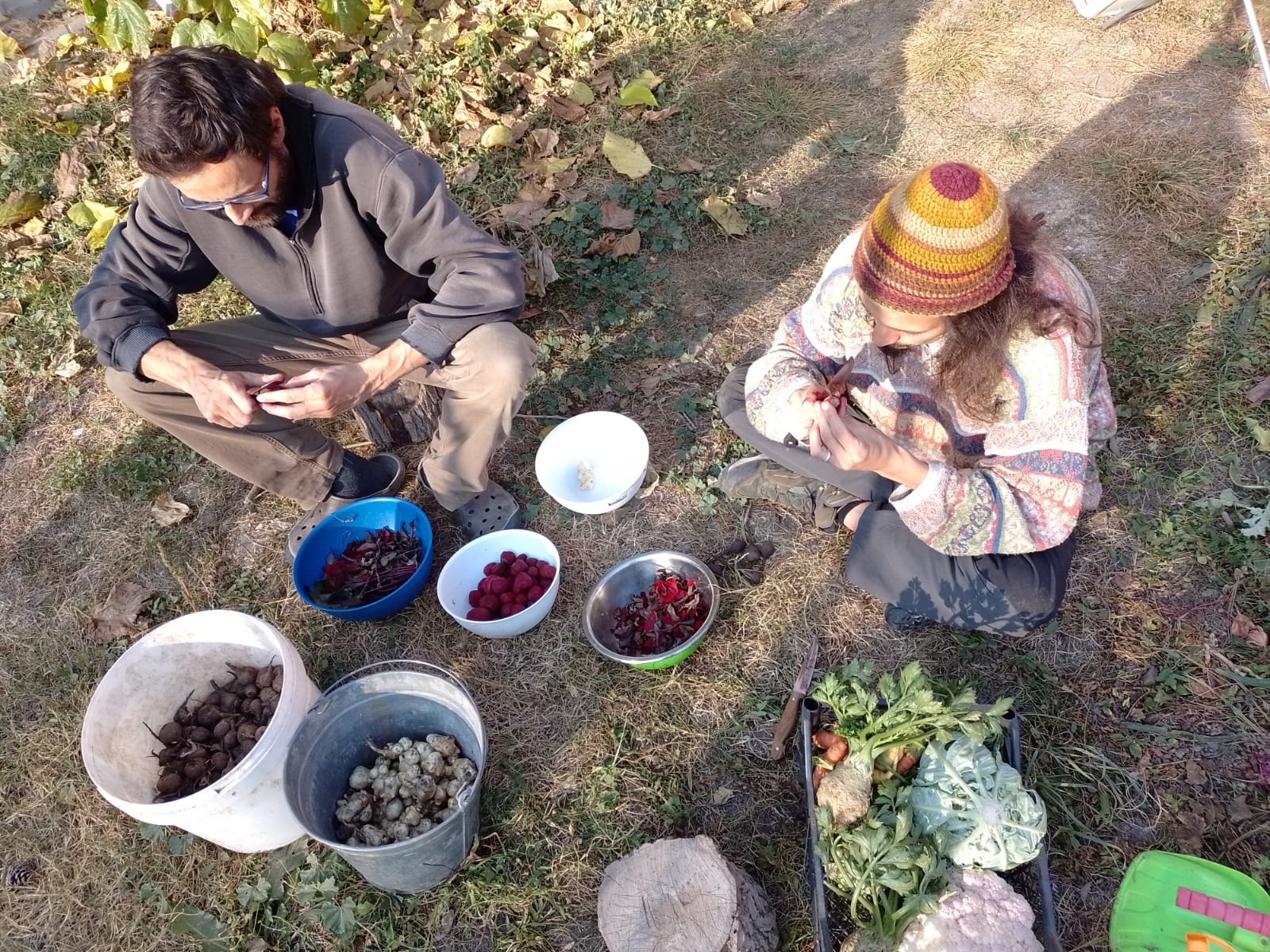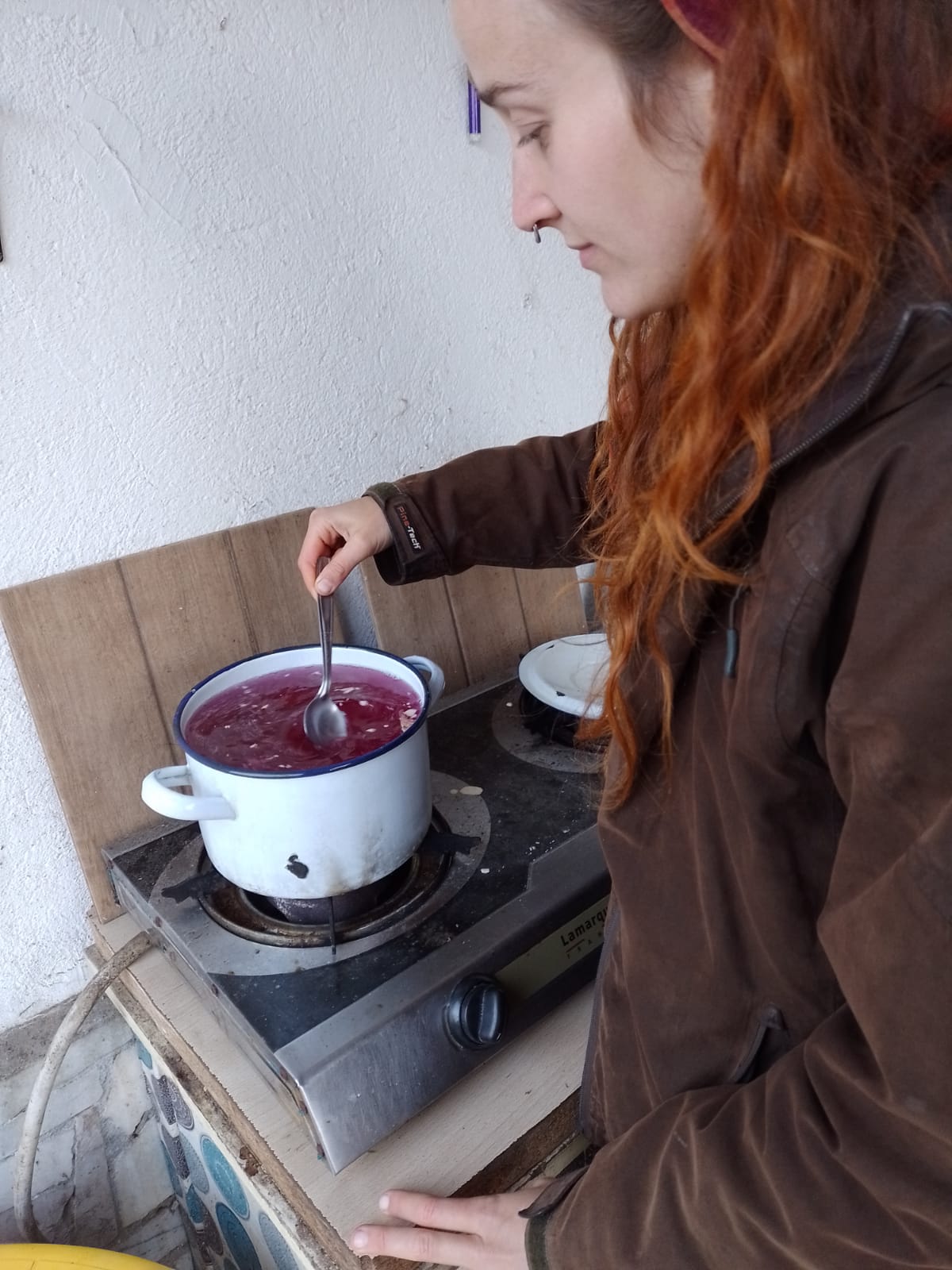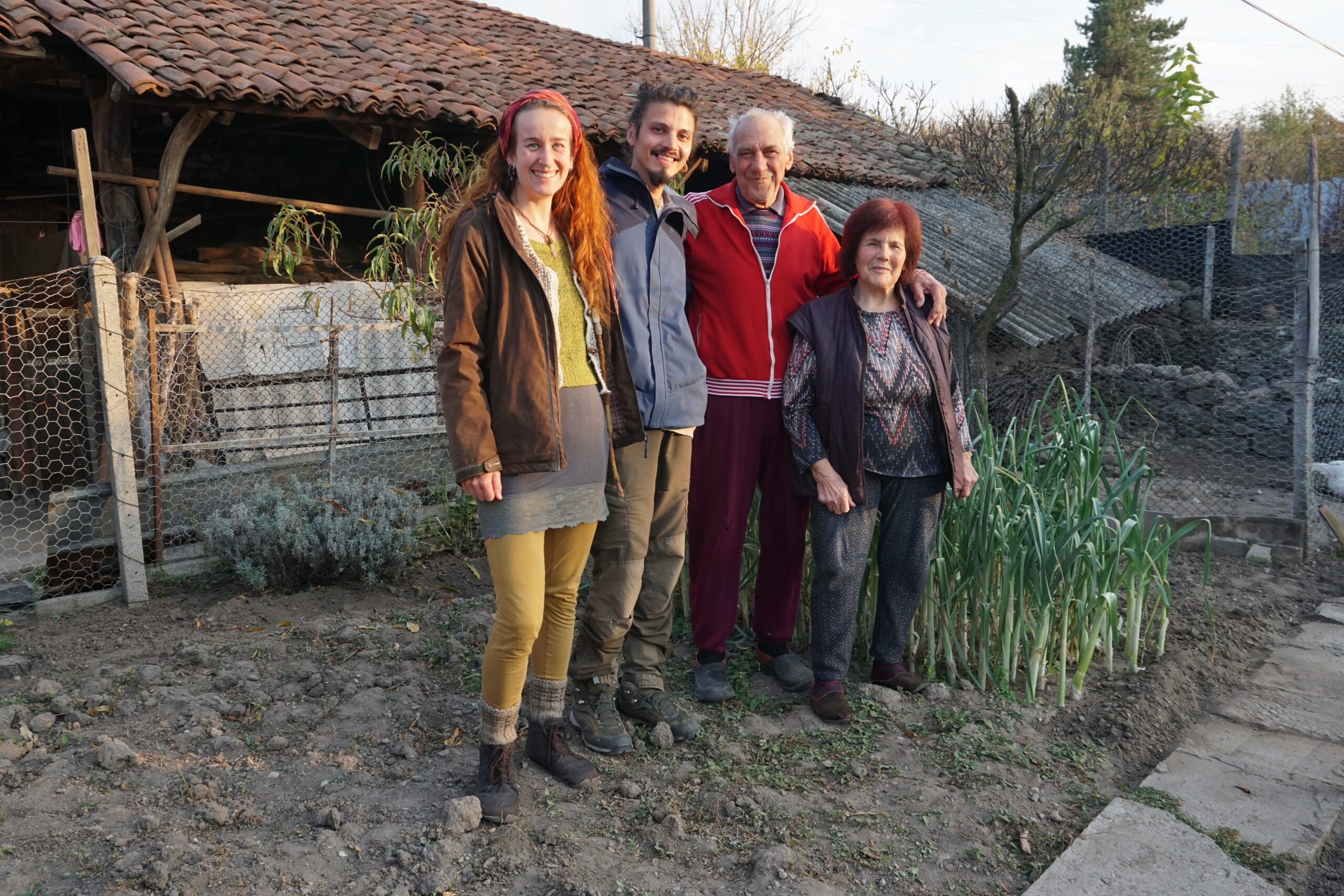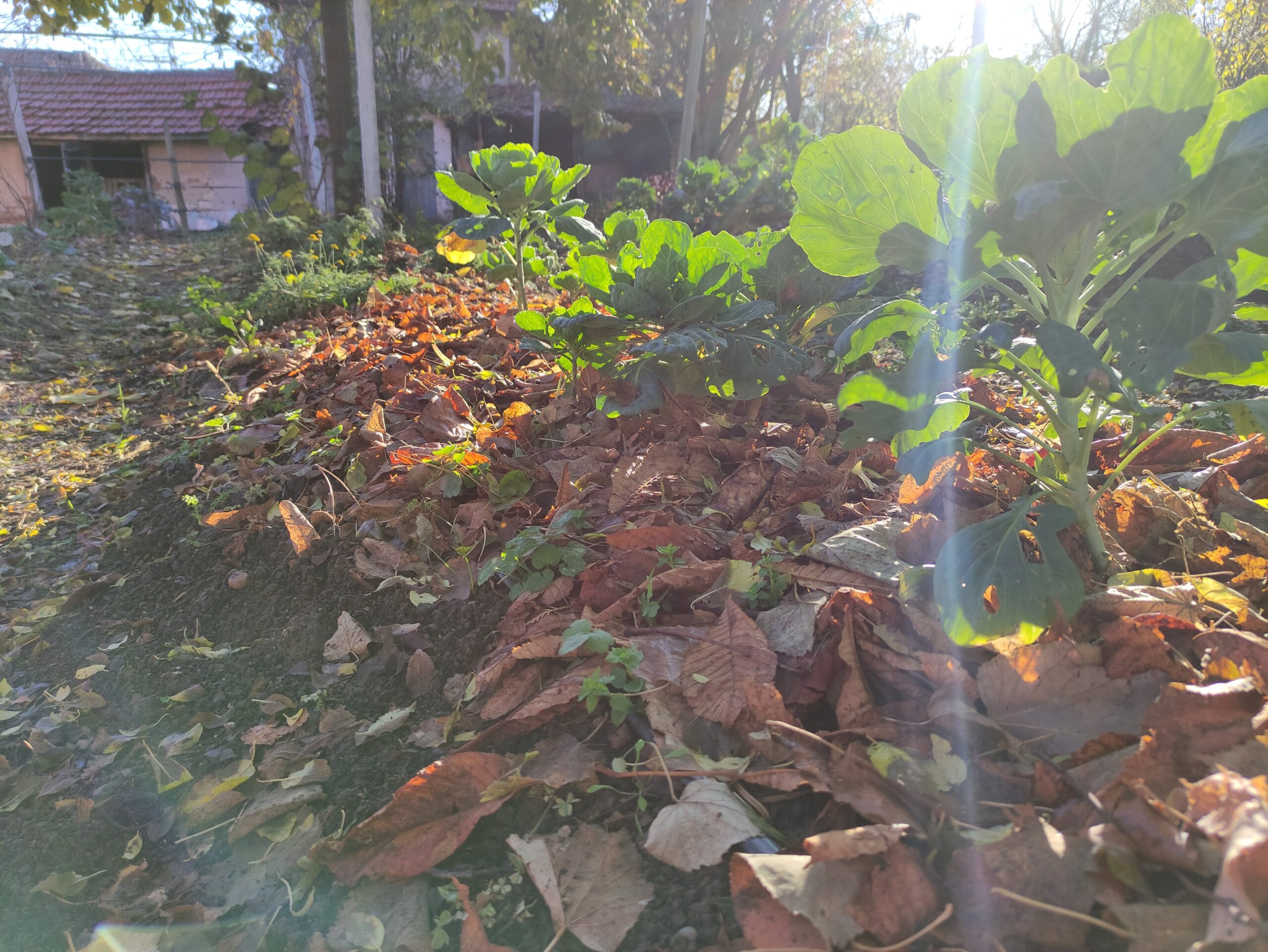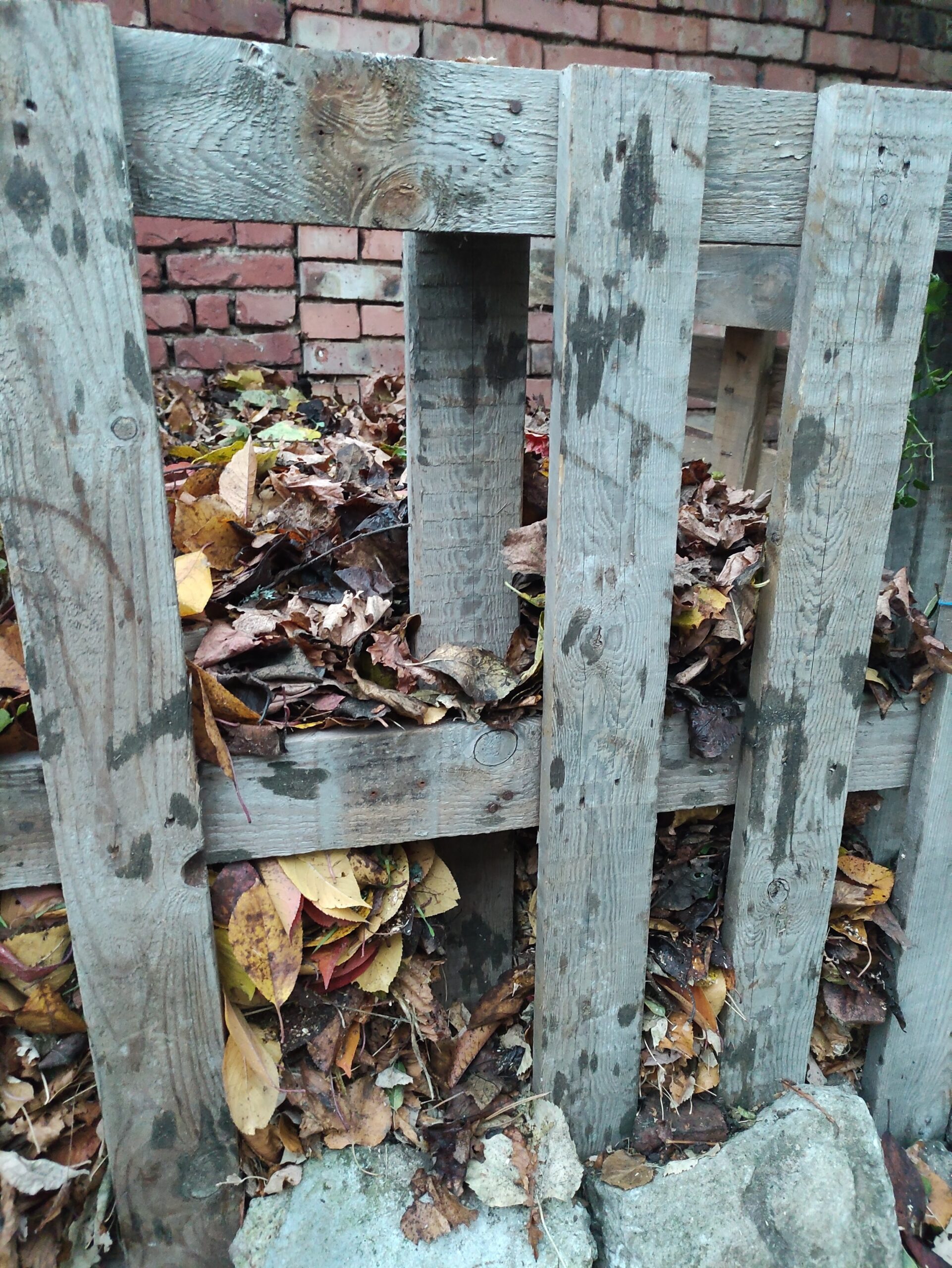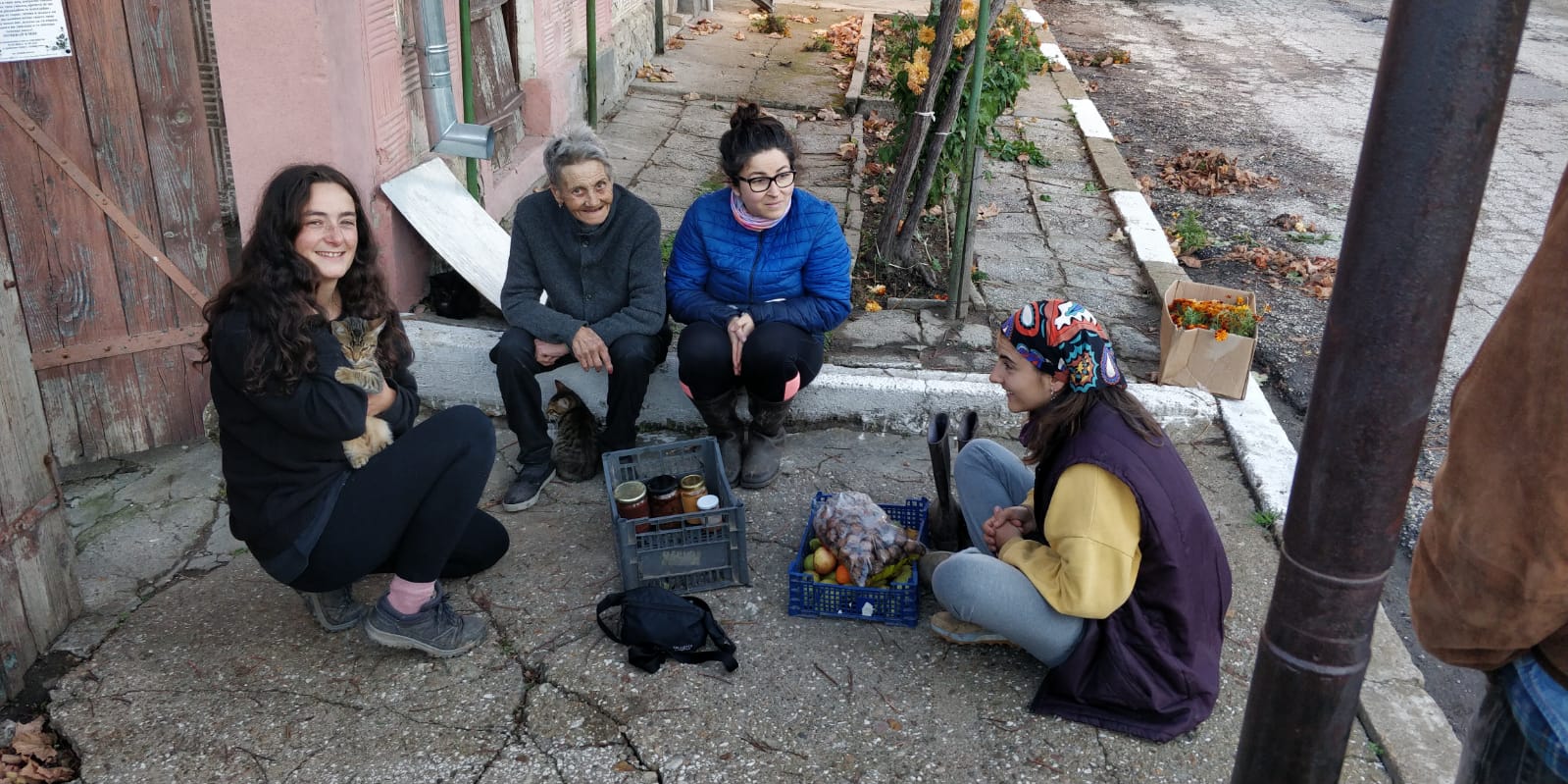Mali:
Здрасти [ zdrasti ] from Bryagovo!
We started our final ESC adventure in the village of Bryagovo, where we will stay till both our projects end (Renzo end of December, and for me mid January). The focus was mainly on helping Miriam and Alex in their gardens, as they will leave this weekend for two weeks of holidays which gives us time to work with the mayor or the cultural centre on community-related projects.
We planted garlic and cleaned various beds from half-dead tomato plants, peppers, beetroots and irrigation tubes. We could still save quite some veggies from a frozen death. Perhaps not pretty enough to sell to their clients, but good enough for our own consumption. Miriam gave us the quest to think about creative ways to recycle or upcycle all the irrigation tubes they had been collecting over the years. All three of us already imagined something around weaving them into baskets…
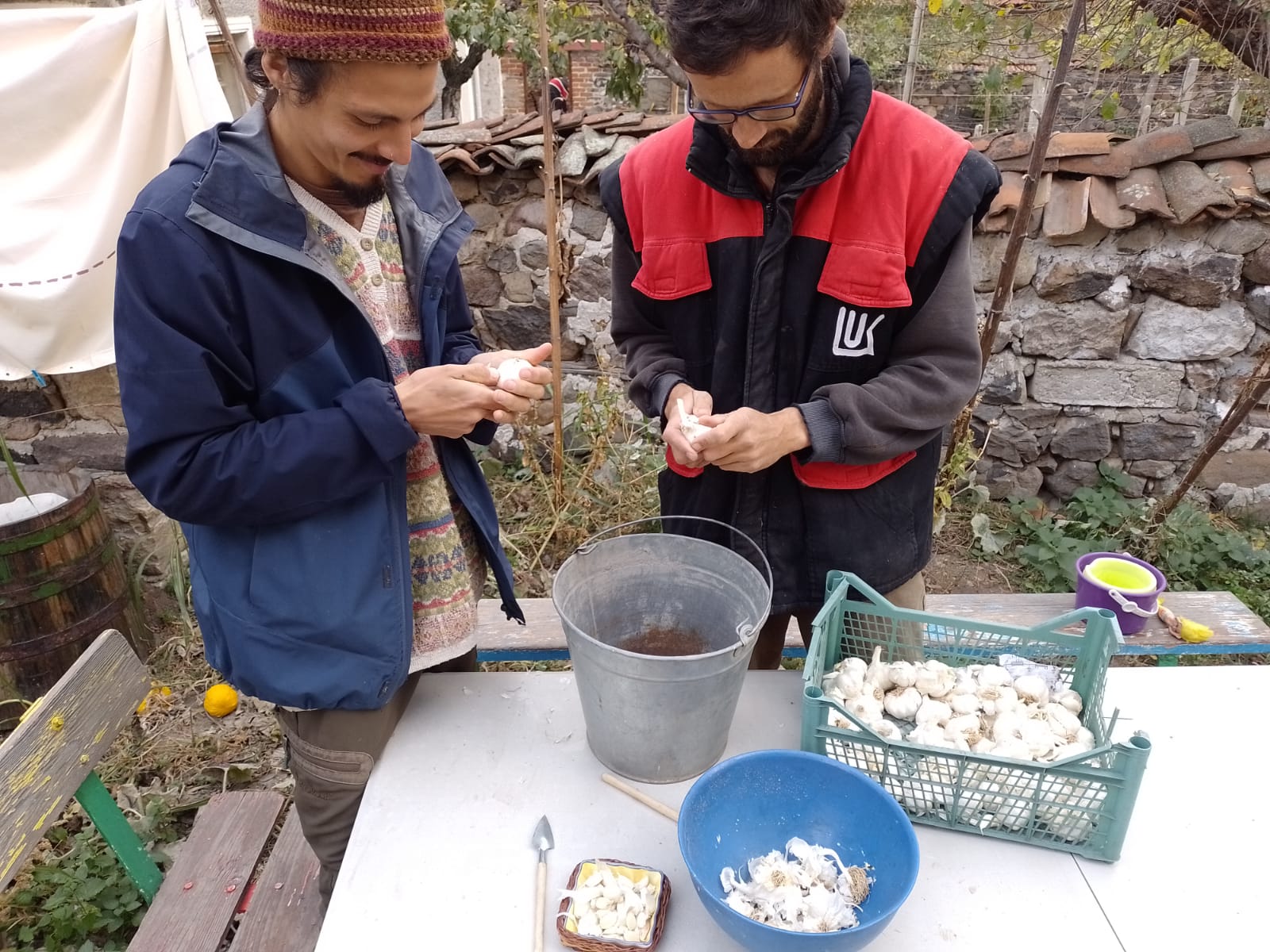
#1 Selecting and peeling garlic heads (photo credits: Mali Boomkens); and #2 Planting garlic (photo credits: Alexander Vatchev)
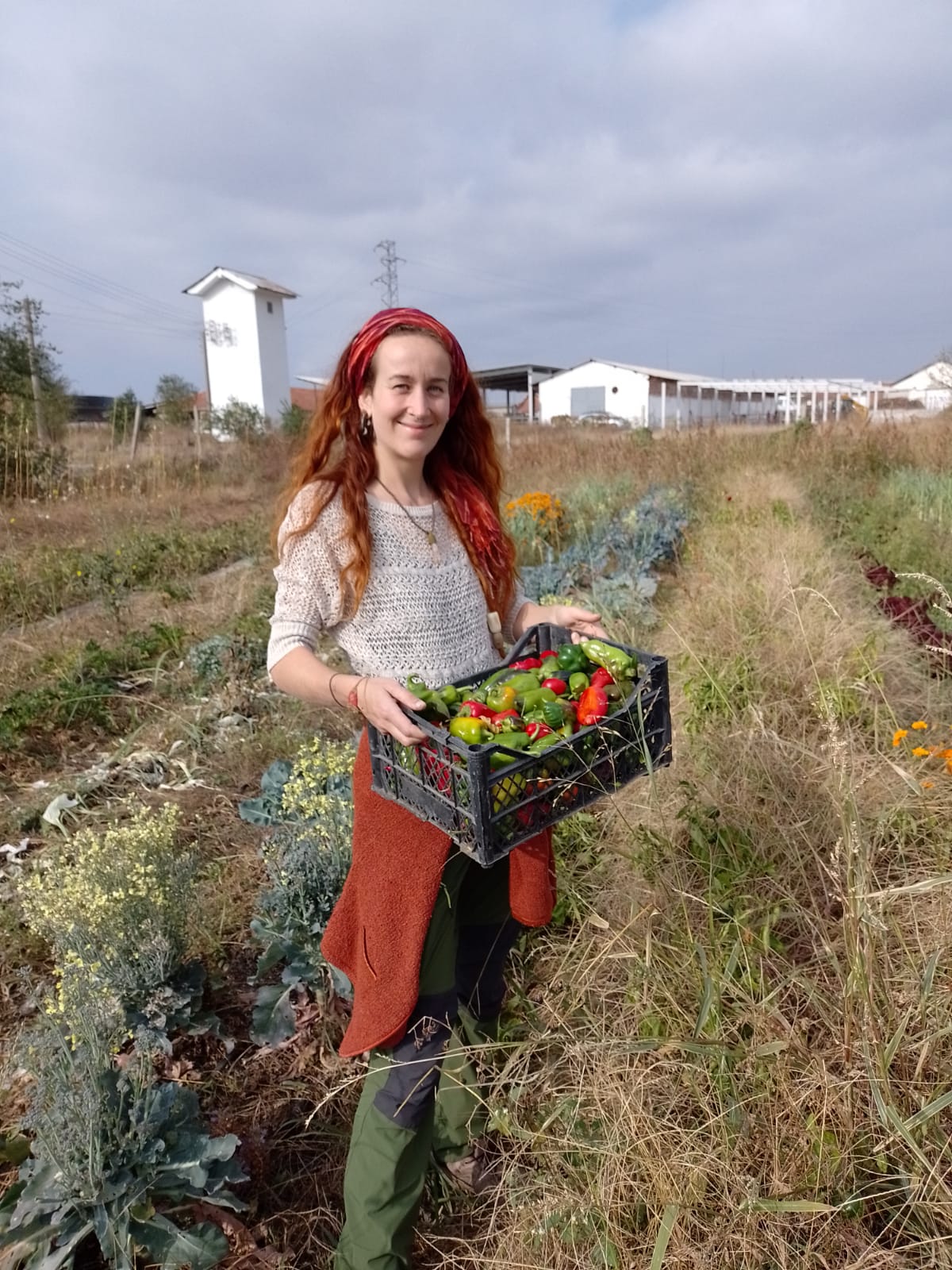
Peppers saved from a frozen death (#1) and big courgettes and sunflowers for seed collection (#2) (Photo credits: Renzo Avendaño)
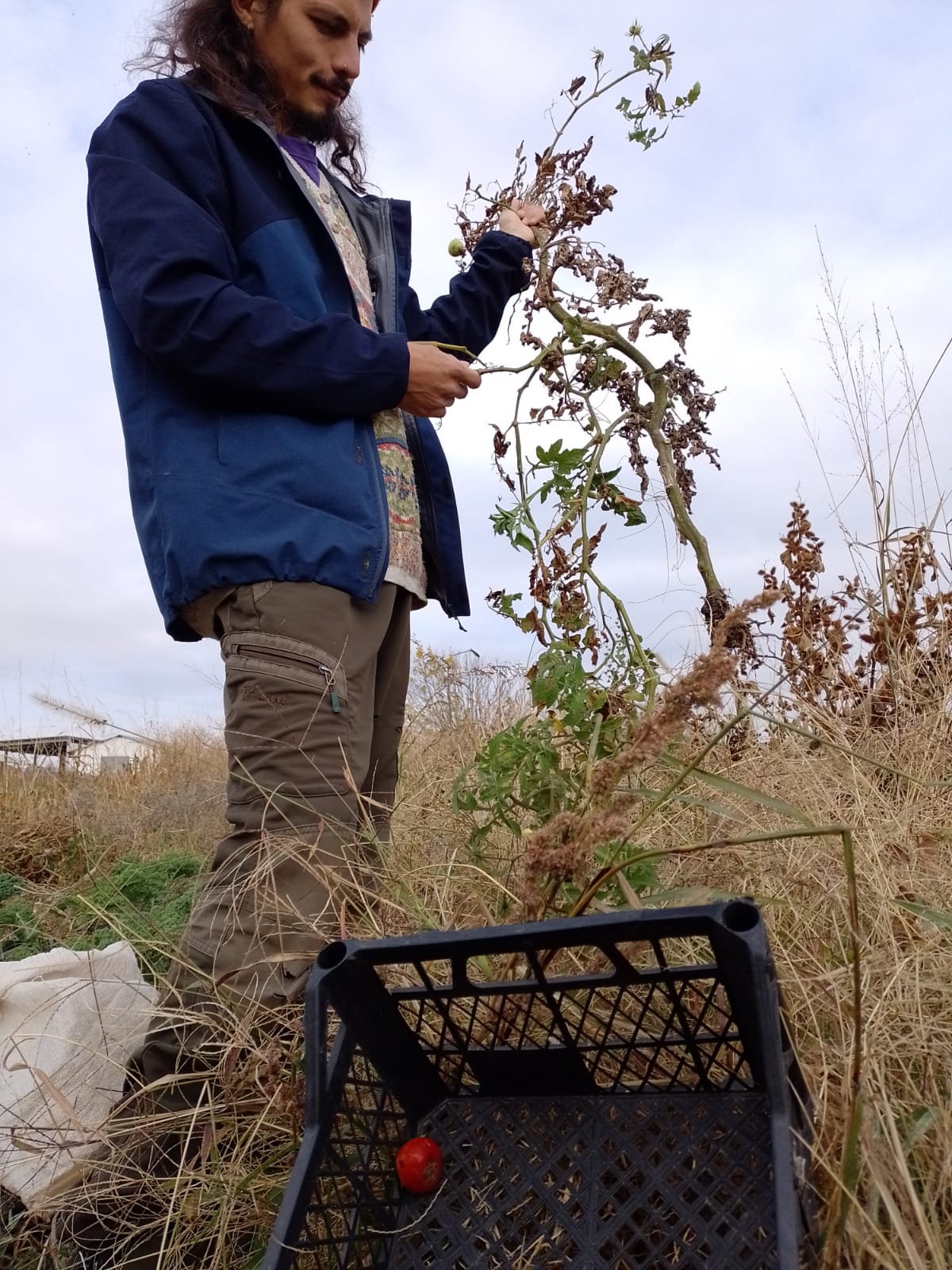
Taking out the tomato plants (photo credits: Mali Boomkens #1; and Renzo Avendaño #2)
Cleaning beds from drip irrigation tubes and waiting for the first autumn rains (photo credits: Renzo Avendaño)
Another way to not this late-summer harvest go to waste, is to ferment and conserve! So we cut for some hours a mixture of beetroots, cauliflower, cabbage, carrots, topinambour and white and black turnip and divided this mix in two recipients, one for fermentation and one for conservation. For the fermentation process these were the ingredients:
– Vinegar and water (1:3)
– Salt (35-40 grams per liter of water)
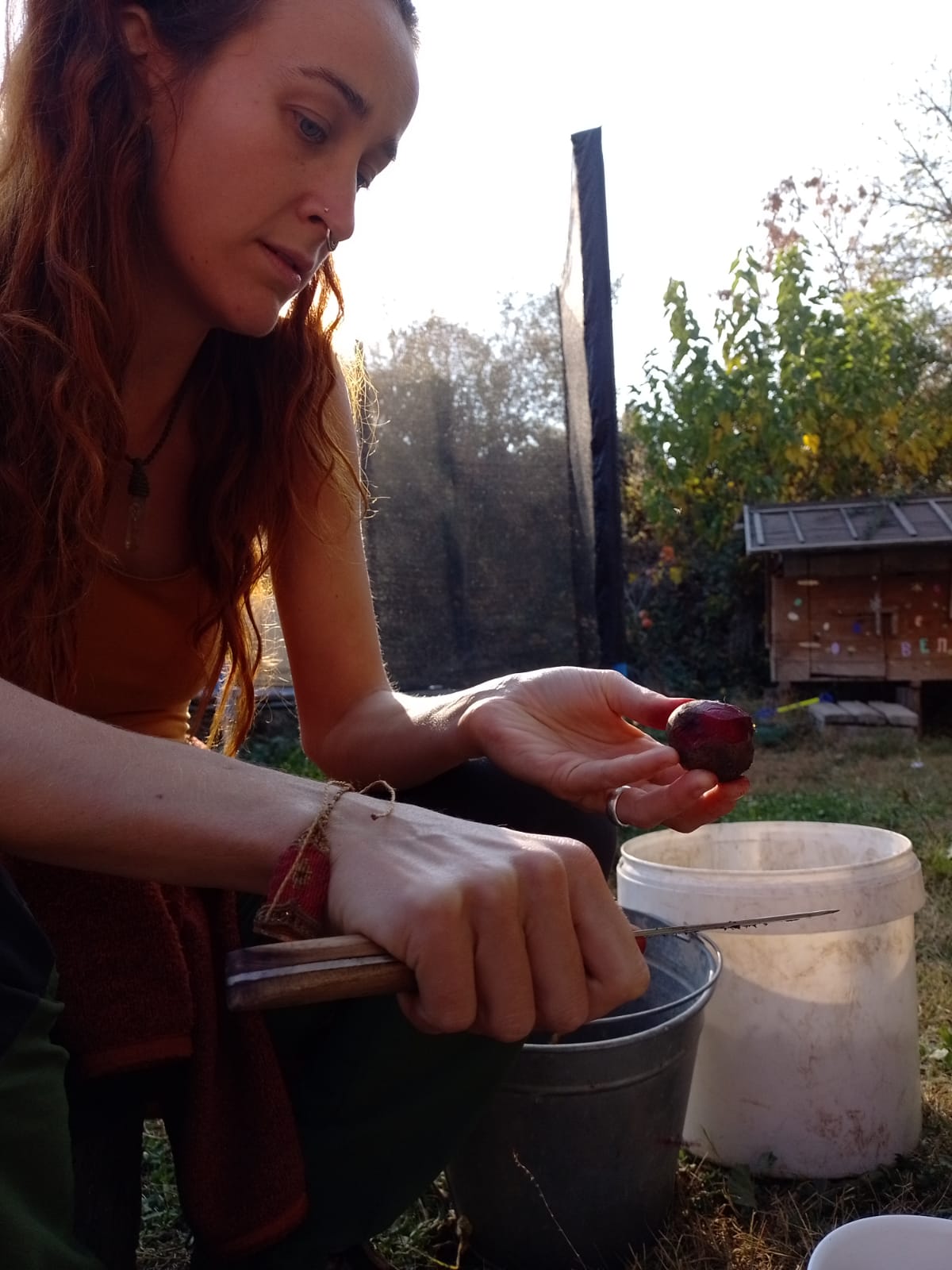
Cutting, cutting and cutting to conserve
…and cutting and cutting (Photo credits Mali Boomkens)
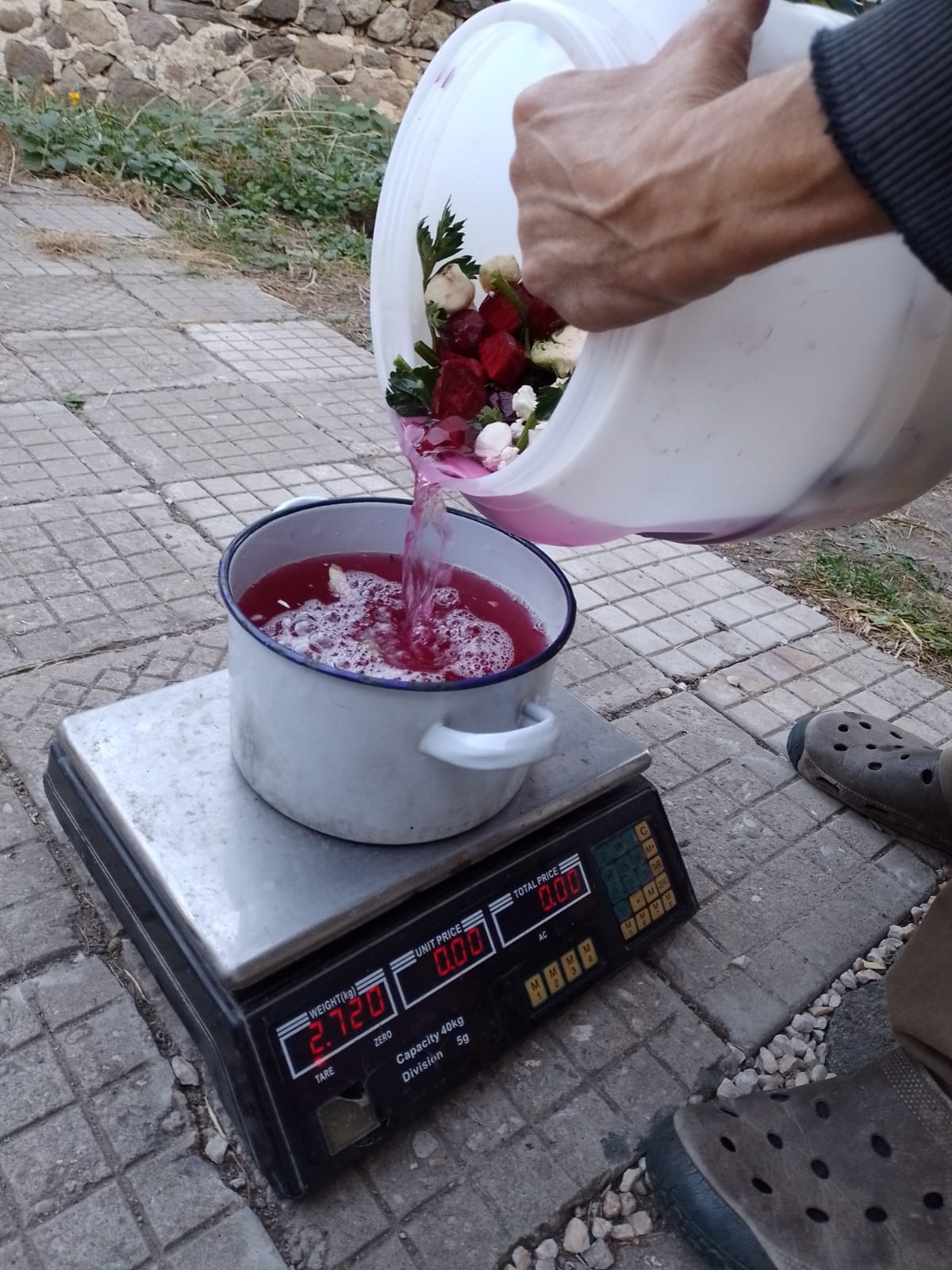
#1 Weighing the amount of water and from there calculate how much vinegar and salt to add;
#2 Heating and melting the course salt (photo credits: Renzo Avendaño)
Ready for the show! (photo credits: Mali Boomkens)
To conserve the other half of the veggies, we just added water and salt (the same quantity, 35 grams per liter of water). In the pics you can see the process. In around two weeks, the fermentation process will have ended. Really curious how it will taste!
When Alex took us to their new patch of land, where we planted garlic amongst others and where he was preparing the edges to plant some fruit trees, we saw they are cultivating okra plants. He told us that some people use the seeds to make a substitute for coffee with it. This got us excited immediately. We haven’t found a moment for it yet, but soon we plan to roast and crush the three handful of seeds that I collected, so we can try a – hopefully – delicious, black liquid that can help us fight our coffee addiction 😉
Next week more about our adventures here!
Ciao!
Renzo:
Hello!
We are in Bryagovo with Miriam and Alex, helping in their beautiful CSA project Fidanoto. We have been here for a week. In this week in addition to settling in the guest house, we helped on Fidanoto’s land. With Miriam we also visited two charming elderly neighbours, still full of strength and life. The purpose of the visits was for them to show us their garden, learn about how they cultivate and learn more about their lives, something that is enriching for us.
One of them is called Aunt Toska, a truly happy woman, who received us very attentively. She showed us her garden, where she yearly grows peppers, potatoes, tomato, leek, sweet potatoes and also a perennial like sage. The leek and sweet potatoes were planted as saplings, that Fidanoto had grown and sold to her.
She told us that she does not use chemical products anymore, for an economic reason since prices have risen some time ago and she cannot afford it. We asked her about any harmful insects in her garden; she told us that she does nothing to them, she just leaves them. However, with the Colorado beetle, she really has a problem, as they can destroy your whole harvest. Regarding the use of fertilizers, like many of the people in the town, she does not use any, nor does she rotate the crops to let the soil rest. She kindly answered to all our questions. We took the opportunity to invite her to the composting workshop that we plan to carry out and we told her that we are going to create a seed library, which will probably be kept in the library of the cultural centre. She liked that idea very much and told us that with her friends they also exchange plants and seeds amongst themselves.
The other neighbour we spoke with is called Aunt Lela, she received us in her small shop, which she has had for many years. Here she works in the morning and in the afternoon her attention goes to her garden. She said that she did not rest for a moment with her 74 years. She told us that her parents had a garden too, in a time that all the work was done manually. Later in time, agricultural machinery was introduced. Formerly they looked for seeds in the institutes of farmers in Plovdiv. She began to make her own garden after the fall of the wall, leaving behind her job as an accountant, at which time most of her harvest was sold to vegetable canneries, something common in the past she said. Now she has a great harvest since it is only her and her husband. To take advantage of the food that the land gives her, she makes all kinds of preserves, much is for consumption in the winter and another part for her children when they come to visit.
We asked her about seeds, telling her about our seed library project and she told us that she keeps some pepper seeds like Aunt Toska. We asked her if she used any type of fertilizer. She answered that she uses fertilizer, as well as soil from the river for her plants and flowers.
We thanked her and left her quiet to return to her job. She kindly invited us to see her garden at some point.
Thank you Toska and Lela!
We will surely visit them again and you will hear about it soon. 🙂
Ciao!
Renzo
Paula:
Здравей! This is the first week I felt winter coming… but we are getting ready for that. You will know more about this soon. Anyway, I am feeling great, learning everyday from this amazing experince!
Today I am here to tell you more about the potential of leaves. People from our village love having a nice and tidy house entrance and, for that, autumn leaves are kind of an inconvenience. It is common practice here to throw the leaves away or to burn them. However, this precious part of the tree can have multiple applications in your garden! We had to take action so this natural material was not wasted and learn how to use what nature gives us for free! After talking with the mayor, many people kept the leaves in a common space so we could use them, and we also helped our neighbours to rake them up from the front of their houses.
What can you do with dry leaves?
MULCHING
Mulching is the practice of covering up soil with all kinds of biodegradable organic materials and it is not a new topic in this blog. Vyara already shared with us the advantages of wool-mulching (Post Week 15) but as we are now immersed in autumn and dry leaves are easily found I will give you more detail about leaf-mulching. Some of the advantages of this practice are maintaining soil temperature warm during the winter. improving soil fertility as it decomposes, retaining soil moisture and suppressing weeds.
You can use both whole or shredded leaves, considering that the mulch layer with shredded leaves can be thicker and will degrade faster.
Brussels sprouts mulched with leaves in a sunny but cold day (photo credit: Paula Ochoa Sánchez)
LEAF MOLD
Do you feel the number of leaves you have is unmanageable? Then… a compost pile is the solution!
Our objective was to create a leaf mold which is an excellent soil amendment to increase soil’s water-holding capacity and to improve soil structure. You will only need leaves and some of your time. We chose a shady space in the garden to place our pile and created a square structure with old pallets. The donated leaves from the local people were placed in there and we had to face with a time-consuming problem: removing the plastic trash that was mixed with the leaves.
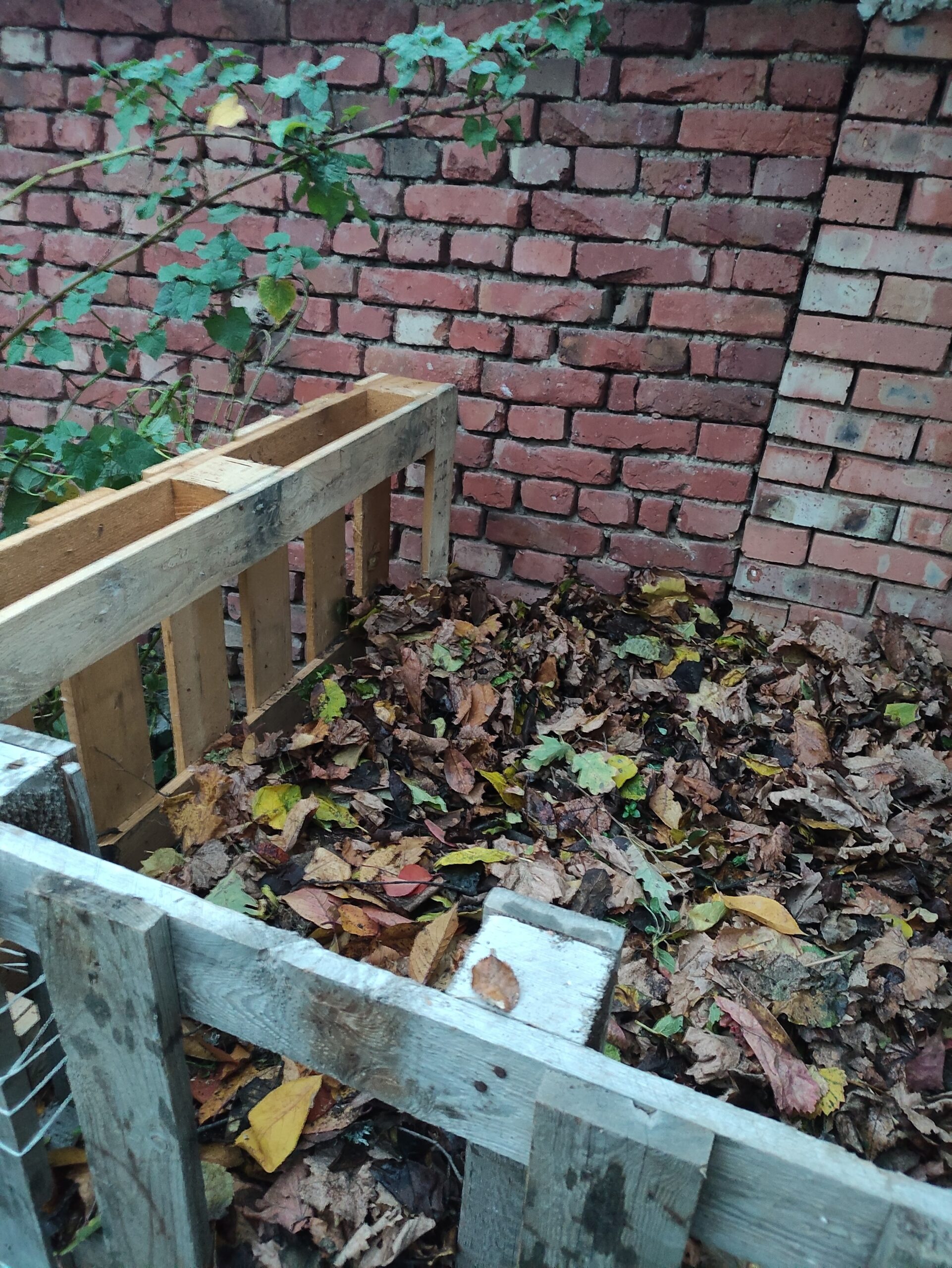
A new pile arrived to the garden: leaf mold coming soon in the best gardens (photo credit: Paula Ochoa Sánchez)
Producing leaf mold is a cool and slow process, mainly mediated by fungi, and it will take between 12-18 months to the pile to turn into composted leaves. Nevertheless, you can speed up the decomposition process by chopping the leaves, by covering your pile with a plastic tarp or by turning the pile occasionally. It is important to keep the pile moist, so try to water it when needed.
Finally, I would love to share with you a picture with our neighbour baba Margo that knitted some socks for us.

